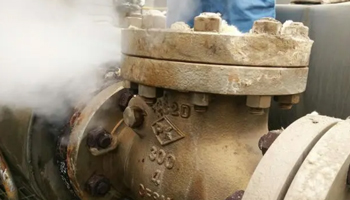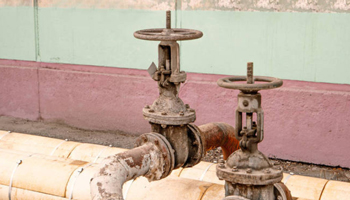Wedge Gate Valve Troubleshooting
Fri, Nov 24 by ATO.com
Wedge gate valves are essential components in many industrial applications, but like any mechanical device, they can encounter problems over time. Here, we'll discuss common issues associated with wedge gate valves and the corresponding solutions to address them effectively.
Leakage
- Problem: One of the most common issues is leakage, which can occur due to wear and tear over time or improper installation. This can lead to both external and internal leakage, compromising the valve's performance.
- Solution: Check for damaged or worn sealing surfaces and replace them if necessary. Properly tighten bolts and nuts to ensure a secure connection. Consider using sealing compounds or gaskets for added leak protection.
Sticking or Jamming
- Problem: Gate valves may become difficult to operate if they stick or jam. This can be caused by the accumulation of debris, corrosion, or improper lubrication of the stem and gate.
- Solution: Regularly lubricate the stem and gate with a suitable lubricant. Inspect for debris, corrosion, or obstructions in the valve and clean or repair as needed. Avoid excessive force when operating the valve.
Corrosion
- Problem: Corrosion can affect the valve body, stem, and gate, leading to reduced functionality and potential leakage. It's important to use appropriate materials for the valve components when dealing with corrosive fluids.
- Solution: Select gate valve materials that are resistant to corrosion for the specific fluid being handled. Apply protective coatings or linings to the valve components if necessary. Implement a corrosion prevention and monitoring program.
Erosion
- Problem: High-velocity flow can cause erosion of the valve components, particularly the seating and sealing surfaces. This can result in premature wear and leakage.
- Solution: Control fluid velocity by installing flow control devices upstream of the valve. Use erosion-resistant materials for valve components. Regularly inspect and replace eroded parts.
Difficulty in Operation
- Problem: If the gate valve is not properly maintained or if it's subjected to extreme conditions, it can become difficult to open or close. This may require excessive force, leading to damage or malfunction.
- Solution: Perform routine maintenance to keep the valve in good working condition. Address any issues promptly to prevent further damage. Consider installing an actuator for automated operation if applicable.
Seat and Seal Damage
- Problem: The sealing surfaces of wedge gate valves, including the seat and wedge, can wear out over time due to friction and erosion, leading to leakage. Regular inspection and maintenance are necessary to prevent this issue.
- Solution: Regularly inspect and replace damaged seals and seats. Ensure proper alignment of the gate and seating surfaces during valve assembly. Apply appropriate sealant or lubricant to extend seal life.
Cavitation
- Problem: In applications with high-pressure differentials, cavitation can occur when the fluid velocity exceeds the speed of sound. This can lead to pitting and damage to the valve components.
- Solution: Control fluid velocity and pressure by using flow control devices or reducing system pressure. Consider using an anti-cavitation trim on the valve to minimize damage.
Water Hammer
- Problem: Rapid closure of gate valves can create a water hammer, which is a sudden pressure surge within the pipeline. This can cause damage to the valve, pipeline, and other system components.
- Solution: Install water hammer arrestors or surge suppressors in the system to reduce pressure surges. Control the rate of valve closure to minimize the impact of the water hammer.
Improper Installation
- Problem:Gate valves must be installed correctly, with the wedge gate in the fully open or closed position. Incorrect installation can lead to performance issues and potential damage.
- Solution: Follow the manufacturer's installation guidelines precisely. Ensure that the gate valve is installed in the correct orientation (fully open or closed) to prevent damage.
Inadequate Lubrication
- Problem: Proper lubrication of the stem and gate is essential to ensure smooth operation. Inadequate lubrication can result in difficulty in turning the valve handle.
- Solution: Regularly lubricate the stem and gate using the recommended lubricants.
External Factors
- Problem: Environmental conditions, such as extreme temperatures or exposure to corrosive substances, can affect the performance and longevity of wedge gate valves.
- Solution: Protect the valve from extreme environmental conditions by using covers, insulation, or enclosures. Apply appropriate coatings or materials to withstand exposure to corrosive substances.
By implementing these solutions and conducting regular maintenance and inspections, you can prevent and address common problems with wedge gate valves, ensuring their reliability and longevity in industrial applications.

